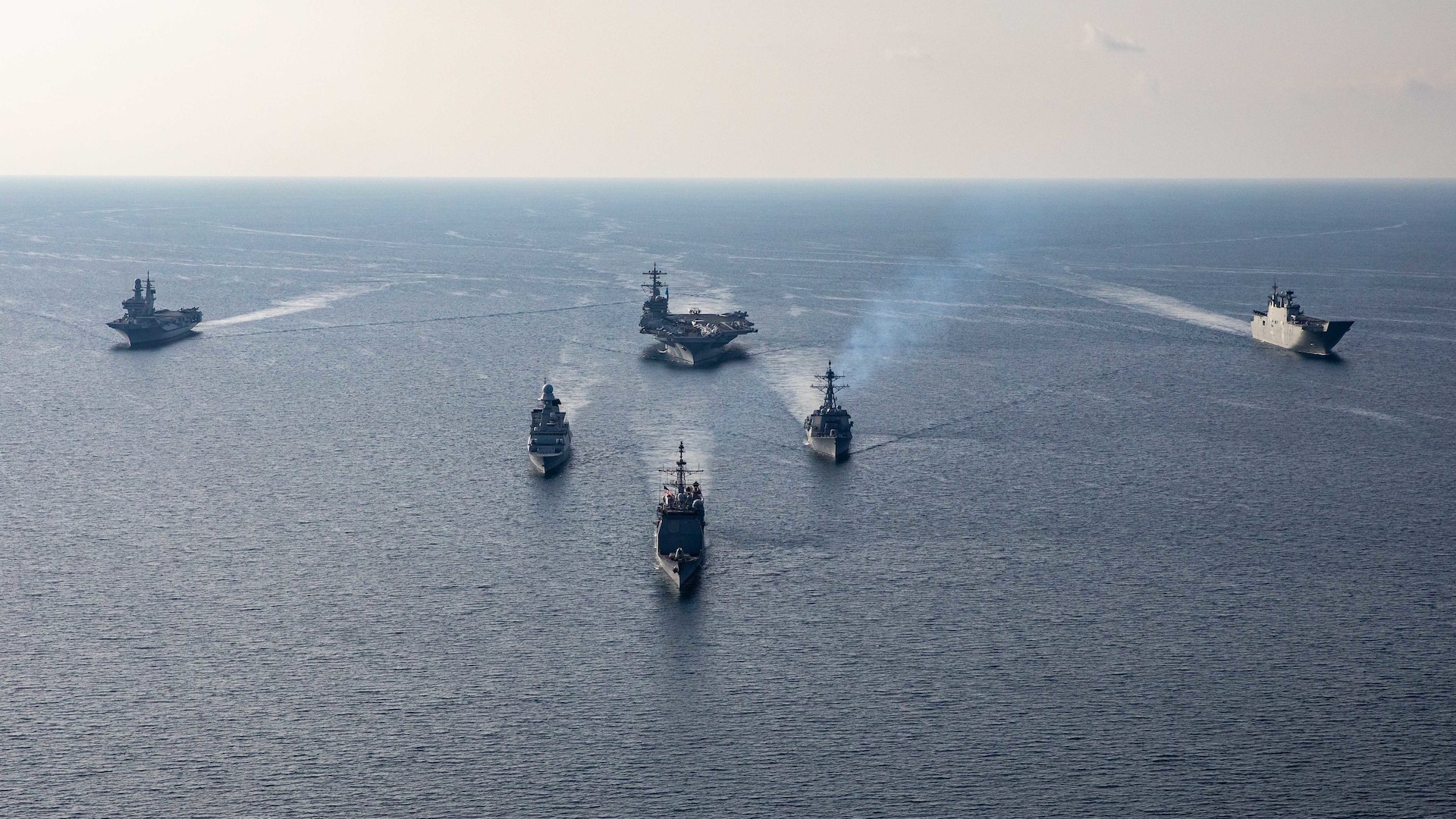

With the Russian invasion of Ukraine dragging on into its second year, the North Atlantic Treaty Organization isn’t slowing down when it comes to shows of deterrence to potential adversaries.
Three NATO aircraft carriers from the United States, Italy, and Spain just wrapped up multicarrier operations in the Mediterranean Sea as part of the USS George H.W. Bush Carrier Strike Group’s scheduled deployment to the U.S. Naval Forces Europe area of operations.
Photos published on the U.S. military’s Defense Visual Information Distribution Service (DVIDS) last week show the Bush streaming in formation with the Italian Navy aircraft carrier ITS Cavour and the Spanish Navy amphibious assault ship-aircraft carrier ESPS Juan Carlos I, among other warships.

The carriers were taking part in NATO Vigilance Activity Neptune Strike 2023-1 (or NEST), the first such iteration of the maritime exercise this year, which saw more than 31 ships and 135 aircraft (including the new F-35 Joint Strike Fighter) operated “in close coordination” alongside supporting units from Greece, Turkey, Croatia, Hungary, the Netherlands, and Albania, according to NATO.
Roughly 8,386 sailors and Marines from 21 NATO countries “conducted deterrence and assurance through execution of a broad spectrum of sea, air, and land activities,” according to the alliance.
While the Russian invasion of Ukraine wasn’t explicitly mentioned in statements from senior Navy leaders, it was clearly top of mind for commanders as NATO nations keep a watchful eye on the alliance’s eastern border.
“The security environment is uncertain; NATO’s capability and will is not,” said U.S. Navy Vice Adm. Thomas Ishee, commander of Naval Striking and Support Forces NATO (STRIKFORNATO) and U.S. 6th Fleet, in a statement. “Enabled by trust, the agility, ingenuity, and tenacity demonstrated by the sailors, Marines, and airmen deter aggression and show we are ready to defend the alliance.”
Subscribe to Task & Purpose Today. Get the latest military news, entertainment, and gear in your inbox daily.
This current round of multicarrier operations comes just months after both the Bush and next-generation USS Gerald R. Ford aircraft carrier integrated with the French Navy’s Charles de Gaulle aircraft carrier, the Cavour, and the United Kingdom’s HMS Queen Elizabeth aircraft carrier for an unprecedented five-carrier maritime exercise party back in November.
This past week marked “the first time Bush operated directly alongside allied carrier strike groups since late November when there were five allied strike groups throughout European waters,” U.S. Navy Lt. Cmdr. Tyler Barker, a spokesman for U.S. Naval Forces Europe-Africa and the 6th Fleet, told Task & Purpose.
Its first deployment in nearly five years following a period of intensive maintenance, the Bush relieved the USS Harry Truman aircraft carrier as part of the U.S. Navy’s 6th Fleet in September of last year.
The Bush’s Carrier Strike Group 10 (CSG 10) is currently made up of Carrier Air Wing 7, Destroyer Squadron 26 — comprised of the Arleigh Burke-class guided-missile destroyers USS Nitze, USS Farragut, USS Truxtun, and USS Delbert D. Black — and the Ticonderoga-class guided-missile cruiser USS Leyte Gulf, according to the Navy.
“The level of trust developed between the U.S. and allied forces throughout our time in the theater, including past iterations of NEST and other bi- and multi-lateral operations, will pay dividends going forward,” said Rear Adm. Dennis Velez, commander of the Bush CSG. “Our national security – as well as Euro-Atlantic security– draws upon the strength of teamwork and our common purpose as allied nations.”
The latest on Task & Purpose
- Keanu Reeves is back as John Wick, possible Marine vet
- US Army M1 Abrams tank named ‘ASVAB Waiver’ keeping watch in Poland
- How the Air Force flew its longest-distance night hostage rescue
- A U-2 spy plane pilot took a selfie with the Chinese spy balloon
- How Green Beret Paris Davis’ teammates fought for his Medal of Honor
